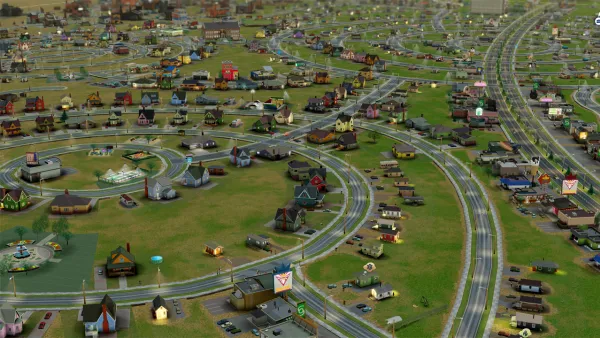The state of Virginia’s decision to limit the use of cul-de-sacs in residential subdivisions(1) will no doubt create a torrent of commentary, both pro and con. In the residential context, cul-de-sacs do have certain advantages: they limit traffic near homes, thus allegedly creating quieter environments for homeowners. So perhaps there is a case for the residential cul-de-sac. But in a commercial setting, the cul-de-sac may be the "right thing in the wrong place--such as a pig in a parlor instead of a barnyard.”(2) In such settings, the cul-de-sac has the same disadvantages as the residential cul-de-sac, with few of the advantages.
The state of Virginia's decision to limit the use of cul-de-sacs in residential subdivisions(1) will no doubt create a torrent of commentary, both pro and con. In the residential context, cul-de-sacs do have certain advantages: they limit traffic near homes, thus allegedly creating quieter environments for homeowners. So perhaps there is a case for the residential cul-de-sac.
But in a commercial setting, the cul-de-sac may be the "right thing in the wrong place--such as a pig in a parlor instead of a barnyard."(2) In such settings, the cul-de-sac has the same disadvantages as the residential cul-de-sac, with few of the advantages.
I work in an office park that is infested with small cul-de-sacs (3) and is cut off from all streets to the east by an interstate highway. As a result, students and employees of my 1500-student law school and of numerous nearby institutions all crowd one street that is the major means of going east or south - which in turn means that during rush hour, this street is so clogged that it can take fifteen or twenty minutes to drive a mile. This example suggests that a disconnected muddle of office-park streets is as inconvenient for drivers as for pedestrians.
None of the traditional rationales for cul-de-sacs justify this sort of layout. Residential cul-de-sacs benefit from low levels of traffic- but a building with hundreds of employees by definition will have lots of traffic nearby, and businesses inhabiting such buildings crave exposure as well as privacy. Denizens of residential cul-de-sacs claim that children can play more easily near their houses - but there are no children playing near most office parks.
The answer to this problem is simple: streets that are lined with offices instead of houses should be on a grid. Period.

Analysis: Cybertruck Fatality Rate Far Exceeds That of Ford Pinto
The Tesla Cybertruck was recalled seven times last year.

National Parks Layoffs Will Cause Communities to Lose Billions
Thousands of essential park workers were laid off this week, just before the busy spring break season.

Retro-silient?: America’s First “Eco-burb,” The Woodlands Turns 50
A master-planned community north of Houston offers lessons on green infrastructure and resilient design, but falls short of its founder’s lofty affordability and walkability goals.

Test News Post 1
This is a summary

Analysis: Cybertruck Fatality Rate Far Exceeds That of Ford Pinto
The Tesla Cybertruck was recalled seven times last year.

Test News Headline 46
Test for the image on the front page.
Urban Design for Planners 1: Software Tools
This six-course series explores essential urban design concepts using open source software and equips planners with the tools they need to participate fully in the urban design process.
Planning for Universal Design
Learn the tools for implementing Universal Design in planning regulations.
EMC Planning Group, Inc.
Planetizen
Planetizen
Mpact (formerly Rail~Volution)
Great Falls Development Authority, Inc.
HUDs Office of Policy Development and Research
NYU Wagner Graduate School of Public Service




























